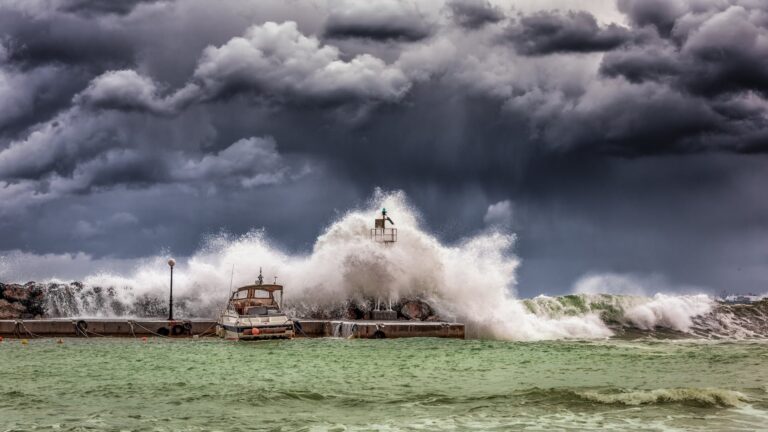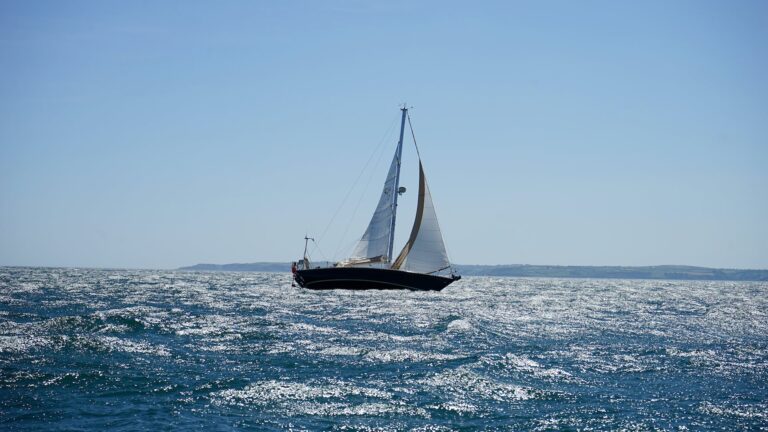What Are The Colors Found On a Nautical Chart?
The Colors Found on a Nautical Chart
As a sailing expert, it’s important to understand the colors found on a nautical chart, how to read and interpret it, and how to use it effectively in order to stay safe while at sea.
The National Ocean Service (NOS) uses various shades of five colors on their regular charts, which allow sailors to navigate and identify land and water areas. In this article, we will discuss the colors used on a nautical chart and why they matter for navigation at sea.
What is a Nautical Chart?
A nautical chart is an ocean navigation tool used by sailors to help them locate land masses and water depths when navigating at sea.
It shows physical features such as coastlines, islands, rocks, rivers, harbours, and buoys as well as navigational aids such as lighthouses and range markers which can be used for plotting courses of travel or anchoring points when out in open waters.
Nautical charts are essential for safe passage in offshore waters as they provide information about the sea floor, depths of the water, hazards that may exist in certain areas, among other things which are necessary for safe navigation at sea.
What is the NOS?
The National Ocean Service (NOS) is part of the United States Department of Commerce’s National Oceanic and Atmospheric Administration (NOAA).
The NOS provides scientific information and technical advice needed to understand our oceans and coasts, its mission is to protect lives and property by providing timely forecasts of storms at sea, managing marine protected areas (MPAs), predicting tides and currents, monitoring fish populations, mapping ocean features that may pose navigational hazards, among other activities related to ocean stewardship in US waters.
Colors Used on a Nautical Chart: Buff/Yellowish
Land areas are shown in buff or yellowish color on nautical charts created by the NOS, this helps sailors identify land masses from water depths when plotting courses of travel or anchoring points when out in open waters.
Coastlines are usually shown with darker shading than inland areas so that sailors can easily distinguish between shorelines and inland regions when navigating at sea.
Colors Used on a Nautical Chart: White
Water areas are usually shown in white color on nautical charts, this helps sailors differentiate between land masses and water depths when plotting courses of travel or anchoring points when out in open waters.
Water depths are indicated by darker shading, this helps sailors identify potential hazards such as rocks or shallow areas that may exist in certain regions before they plot their course of travel or anchoring points when out in open waters.
Colors Used on a Nautical Chart: Blue
Shallow regions are usually shown in blue color, this helps sailors differentiate between deep water regions and shallow regions that may be prone to strong currents or tidal changes before they plot their course of travel or anchoring points when out in open waters.
Colors Used on a Natical Chart: Green
Submerged areas which uncover during some tidal stages are usually shown with green color, this helps sailors identify any potential hazards that could exist due to changing tides before they plot their course of travel or anchoring points when out in open waters.
Why Do These Colors Matter?
The colors used on nautical charts help sailors interpret the information provided more easily, this allows them to quickly identify land masses from water depths so that they can plan their voyage more efficiently before embarking into open waters.
Additionally, having different shades for different regions helps sailors differentiate between shallow regions from deep water regions so that they can avoid any potential hazards that could be present due to varying ocean depths or changing tides while sailing at sea safely without any issues arising during their voyage into open waters.
How To Read and Interpret a Nautical Chart?
When reading and interpreting a nautical chart one must first familiarize themselves with all the symbols used by the National Ocean Service (NOS). These symbols will show features such as coastlines, islands, rocks, rivers, harbours etc.,
Navigational aids such as lighthouses & range markers which can be used for plotting courses & finding anchorages when out in open waters & also indicate any potential dangers that may exist due to changing tides & ocean depths before venturing out into open waters safely without any issues arising during your voyage into open waters .
Once you have become familiar with all the symbols then you can begin interpreting your chart properly by studying each feature carefully & understanding how it relates to your course/destination before embarking into open seas safely without any issues arising during your voyage into open seas .
Tips For Using a Nautica Chart Effectively
Using your chart effectively will ensure safe passage through offshore waterways, here are some tips for using your chart correctly:
- Read – Take time to read your chart carefully so you can properly interpret all features & symbols
- Plan – Plot your course carefully using all available navigational aids & features indicated by symbols marked on your chart
- Check – Make sure you check all applicable weather conditions before venturing out into open seas
- Update – Make sure you update your charts regularly so you have accurate information about potential hazards & changing conditions while sailing
- Knowledge – Make sure you have knowledge about tides & currents so you can adjust your course accordingly while sailing
- Communicate – Always communicate with other vessels when sailing offshore so you can stay aware about any potential changes or danger spots around you.
Conclusion
Navigating through offshore waterways requires an understanding of how to read & interpret nautica charts correctly, understanding the various shades of five colors used by the National Ocean Service (NOS) makes it easier for sailors to identify land masses from water depths while plotting their course of travel safely without any issues arising during their voyage into open seas.
Being aware of navigational aids such as lighthouses & range markers along with knowing about potential dangers due to changing tides & ocean depths will help ensure safe passage through offshore waterways so you can enjoy sailing without any worries!







